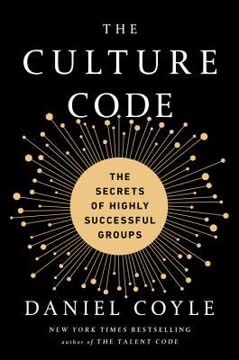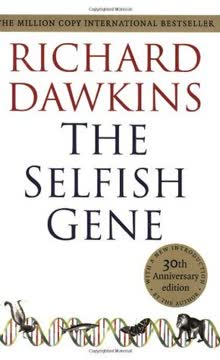Key Takeaways
1. HR as a Strategic Asset: Measuring and Maximizing Impact
To realize this potential, human resource managers must understand the firm's strategy; that is, its plan for developing and sustaining an advantage in the marketplace.
HR's strategic potential. In today's knowledge-based economy, human resources have become a critical source of competitive advantage. Unlike physical assets, human capital is difficult to imitate and can provide sustainable value. However, to leverage this potential, HR must evolve from an administrative function to a strategic partner.
Measuring HR's impact. The challenge lies in quantifying HR's contribution to business success. Traditional financial metrics fail to capture the full value of intangible assets like human capital. To demonstrate their strategic impact, HR professionals need innovative measurement systems that link HR practices to key business outcomes such as profitability and shareholder value.
The HR architecture. A strategic HR approach focuses on three key elements:
- The HR function: Professionals who design and implement HR practices
- The HR system: Policies and practices that shape employee behaviors
- Employee behaviors: The ultimate driver of organizational performance
2. Aligning HR with Business Strategy: The HR Scorecard Approach
Once a firm clarifies its strategy, human resource professionals need to build a clear business case for why and how HR can support that strategy.
Strategic alignment. The HR Scorecard is a tool that helps align HR practices with overall business strategy. It provides a framework for identifying and measuring HR's contribution to strategic goals.
Seven-step process:
- Clearly define business strategy
- Build a business case for HR as a strategic asset
- Create a strategy map
- Identify HR deliverables within the strategy map
- Align the HR architecture with HR deliverables
- Design the strategic HR measurement system
- Implement management by measurement
Strategy map. This visual representation of the value creation process helps identify key performance drivers and how HR practices support them. It clarifies the causal relationships between HR initiatives, employee behaviors, operational outcomes, and financial results.
3. Creating an HR Scorecard: Balancing Cost Control and Value Creation
Cost control comes through measuring HR efficiency. Value creation comes through measuring HR deliverables, external HR system alignment, and the High-Performance Work System.
Four key dimensions:
- HR deliverables: Strategic outcomes HR must produce
- High-Performance Work System: Core HR practices that drive performance
- HR system alignment: How well HR practices support strategy
- HR efficiency: Cost-effectiveness of HR operations
Balancing priorities. While cost control is important, the HR Scorecard should emphasize value creation. This shift in focus helps position HR as a strategic asset rather than just an administrative cost center.
Measurement approach. The Scorecard should include a mix of leading and lagging indicators. Leading indicators (like employee satisfaction) predict future performance, while lagging indicators (like turnover rates) confirm past performance. This balanced approach provides a more comprehensive view of HR's impact.
4. Quantifying HR's Strategic Impact: Cost-Benefit Analysis
To demonstrate its strategic contribution to senior line managers, HR needs a measurement system that focuses on two dimensions: cost control (driving out costs in the HR function and enhancing operational efficiency outside of HR), and value creation (ensuring that the HR architecture intersects with the strategy implementation process).
Financial literacy. HR professionals need to develop skills in finance and accounting to effectively quantify the return on investment (ROI) of HR initiatives. This includes understanding concepts like net present value (NPV) and payback periods.
Key considerations:
- Identify strategic importance of HR initiatives
- Estimate both costs and benefits over multiple time periods
- Account for the time value of money
- Consider opportunity costs and risks
Measurement hierarchy. Organizations typically progress through levels of sophistication in HR measurement:
- Basic cost tracking
- Subjective estimates of benefits
- Formal ROI calculations using financial analysis techniques
5. Principles of Effective HR Measurement: From Concepts to Metrics
To have managerial value, the measure must be expressed in numerical units that have inherent performance significance (such as dollars).
Conceptual clarity. Start by clearly defining the concepts you want to measure. Ensure that metrics accurately reflect these underlying constructs to avoid measurement errors.
Types of measures:
- Nominal: Categorization without quantification
- Ordinal: Ranking without precise intervals
- Interval: Equal intervals between values
- Ratio: Absolute zero point, allowing meaningful comparisons
Causation vs. correlation. Focus on establishing causal relationships between HR practices and business outcomes, not just correlations. This requires careful analysis and consideration of other influencing factors.
Actionable insights. Prioritize measures that provide clear guidance for decision-making. Avoid collecting data that doesn't inform strategic choices or performance improvement.
6. Measuring HR Alignment: Internal and External Perspectives
Alignment requires that human resource and line managers develop a shared view of HR's role.
Internal alignment. Assess how well different HR practices work together cohesively. This helps identify conflicts or redundancies within the HR system.
External alignment. Evaluate how well the HR system supports the overall business strategy. This ensures HR initiatives directly contribute to strategic goals.
Measurement approaches:
- Surveys and focus groups with employees and managers
- Alignment matrices comparing HR practices to strategic objectives
- Systems Alignment Map (SAM): Visual representation of alignment across the organization
Continuous improvement. Regularly reassess alignment as business strategies evolve. Use alignment measures to guide ongoing adjustments to HR practices.
7. HR Professional Competencies: Evolving for Strategic Partnership
To serve as valuable business partners, HR professionals need to know much more about the business than line managers need to know about HR.
Core competencies:
- Knowledge of the business
- Delivery of HR practices
- Management of change
- Management of culture
- Personal credibility
Strategic performance management. A new critical competency involving the ability to design and implement balanced performance measurement systems that link HR to business strategy.
Competency development:
- Formal training programs
- Job rotations and cross-functional experiences
- Mentoring and coaching
- Self-directed learning
8. Implementing the HR Scorecard: Change Management Essentials
Effective Change = Quality x Acceptance (or EC = Q x A).
Change management framework. Successful implementation of the HR Scorecard requires attention to seven key factors:
- Leading change: Clear ownership and sponsorship
- Creating a shared need: Building understanding and urgency
- Shaping a vision: Defining desired outcomes
- Mobilizing commitment: Engaging key stakeholders
- Building enabling systems: Providing necessary resources and support
- Monitoring and demonstrating progress: Tracking implementation
- Making it last: Sustaining the change long-term
Overcoming resistance. Address concerns from both line managers and HR professionals. Demonstrate the value of measurement and link it to individual and organizational success.
Continuous improvement. Treat the HR Scorecard as an evolving tool. Regularly review and refine measures based on changing business needs and lessons learned from implementation.
Last updated:
FAQ
What's The HR Scorecard about?
- Strategic HR Measurement: The HR Scorecard by Dave Ulrich focuses on measuring and managing human resources as a strategic asset. It highlights the importance of aligning HR practices with business strategy to enhance performance.
- HR Scorecard Framework: The book introduces the HR Scorecard, a tool designed to quantify HR's contributions to organizational success by linking HR activities to business outcomes.
- Research-Based Insights: Grounded in over a decade of research, the book provides empirical evidence on the relationship between HR practices and firm performance, guiding HR managers in demonstrating their value.
Why should I read The HR Scorecard?
- Enhance HR's Strategic Role: The book helps HR professionals transition from administrative roles to strategic partners, offering practical tools and frameworks for this shift.
- Evidence-Based Approach: With insights backed by data from nearly 3,000 firms, it serves as a credible resource for implementing effective HR measurement systems.
- Practical Implementation: It provides actionable steps for creating an HR Scorecard, making it a useful guide for aligning HR measurement practices with business goals.
What are the key takeaways of The HR Scorecard?
- Linking HR to Strategy: Aligning HR practices with business strategy is crucial for creating value and demonstrating HR's impact on key performance drivers.
- Importance of Measurement: Effective measurement systems are essential for managing HR and demonstrating its contribution to organizational success.
- Causal Relationships: The book introduces causal models to illustrate how HR practices influence business outcomes, helping HR professionals articulate their impact.
What is the HR Scorecard, and how is it created?
- Definition of HR Scorecard: It is a strategic management tool that links HR deliverables to business outcomes, allowing organizations to measure HR's contribution to performance.
- Seven-Step Process: The book outlines a process for creating an HR Scorecard, including defining business strategy and aligning HR systems with deliverables.
- Focus on Key Metrics: Emphasizes selecting key metrics that reflect HR's impact, avoiding measurement overload, and ensuring alignment with business objectives.
How does The HR Scorecard define HR as a strategic partner?
- Strategic Asset Definition: HR is defined as a strategic partner by its role in developing human capital essential for competitive advantage.
- Causal Influence: HR can influence business outcomes through effective measurement and alignment with organizational strategy.
- Evolving Role of HR: The book highlights HR's evolution from an administrative function to a strategic partner, requiring a shift in mindset and practices.
What are the principles of good measurement in HR according to The HR Scorecard?
- Relevance of Data: Measurement systems should be based on data that directly link HR activities to business outcomes.
- Causal Relationships: Clear causal relationships between HR practices and business results are essential for understanding HR's impact.
- Continuous Improvement: The book advocates for a measurement system that encourages continuous improvement and adaptation to changing business needs.
What are some common HR performance drivers mentioned in The HR Scorecard?
- Employee Competence: Focus on recruiting and developing skilled employees, as competence directly influences performance and competitive advantage.
- Employee Engagement: Engaged employees contribute positively to productivity and retention, affecting overall firm success.
- Organizational Culture: A strong culture aligned with business strategy enhances employee performance and satisfaction.
How does The HR Scorecard suggest measuring HR's contribution to firm performance?
- Balanced Scorecard Approach: Incorporates both financial and non-financial metrics for a comprehensive assessment of HR's impact.
- Linking Metrics to Strategy: Emphasizes aligning HR metrics with strategic objectives to ensure relevance and contribution to business success.
- Causal Models: Provides a framework for measuring HR's contribution by illustrating relationships between HR practices and business outcomes.
What challenges might I face when implementing the HR Scorecard?
- Data Collection Difficulties: Collecting relevant data to support the HR Scorecard can be challenging due to inadequate tracking systems.
- Resistance to Change: Resistance from management and employees accustomed to traditional practices may occur, requiring effective communication.
- Alignment with Business Strategy: Ensuring alignment with business strategy can be complex, especially in large organizations with multiple units.
What are some best practices for HR measurement according to The HR Scorecard?
- Focus on Key Metrics: Concentrate on a limited number of key metrics that truly reflect HR's impact to avoid measurement overload.
- Engage Stakeholders: Involve stakeholders in the measurement process to foster buy-in and ensure metric relevance.
- Regular Review and Adaptation: Regularly review and adapt the measurement system to reflect changes in the business environment.
What are the best quotes from The HR Scorecard and what do they mean?
- "HR can’t legitimately claim its share of the firm’s resources unless it can show how it contributes to the firm’s financial success.": Highlights the necessity for HR to demonstrate its value in financial terms to secure resources.
- "You must have a persuasive story about what’s in the black box.": Emphasizes the need for HR to clearly articulate the connections between practices and business outcomes.
- "What gets measured, gets managed.": Reflects the principle that tracking and evaluating HR metrics is crucial for driving improvement and accountability.
How does the HR Scorecard contribute to strategic HR management?
- Linking HR to Business Outcomes: Provides a framework for connecting HR practices to business performance, demonstrating HR's strategic value.
- Facilitating Data-Driven Decisions: Offers relevant metrics for informed decision-making about HR investments and practices.
- Supporting Continuous Improvement: Encourages regular assessment and refinement of HR practices based on performance data to ensure alignment with business strategies.
Review Summary
The HR Scorecard receives mostly positive reviews, with readers praising its fresh perspective on hiring talent and its relevance to HR professionals. Reviewers appreciate the book's insights into contemporary HR issues and its focus on competencies. Some find it informative but challenging to digest due to its scientific language. Critics note the book's highly mechanistic approach and lack of real-world examples. Overall, readers value the book's concepts but suggest it could benefit from more practical applications and less academic writing.
Similar Books
Download PDF
Download EPUB
.epub digital book format is ideal for reading ebooks on phones, tablets, and e-readers.












